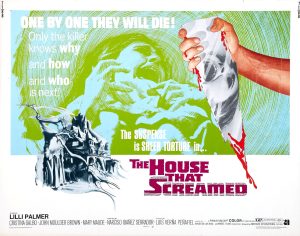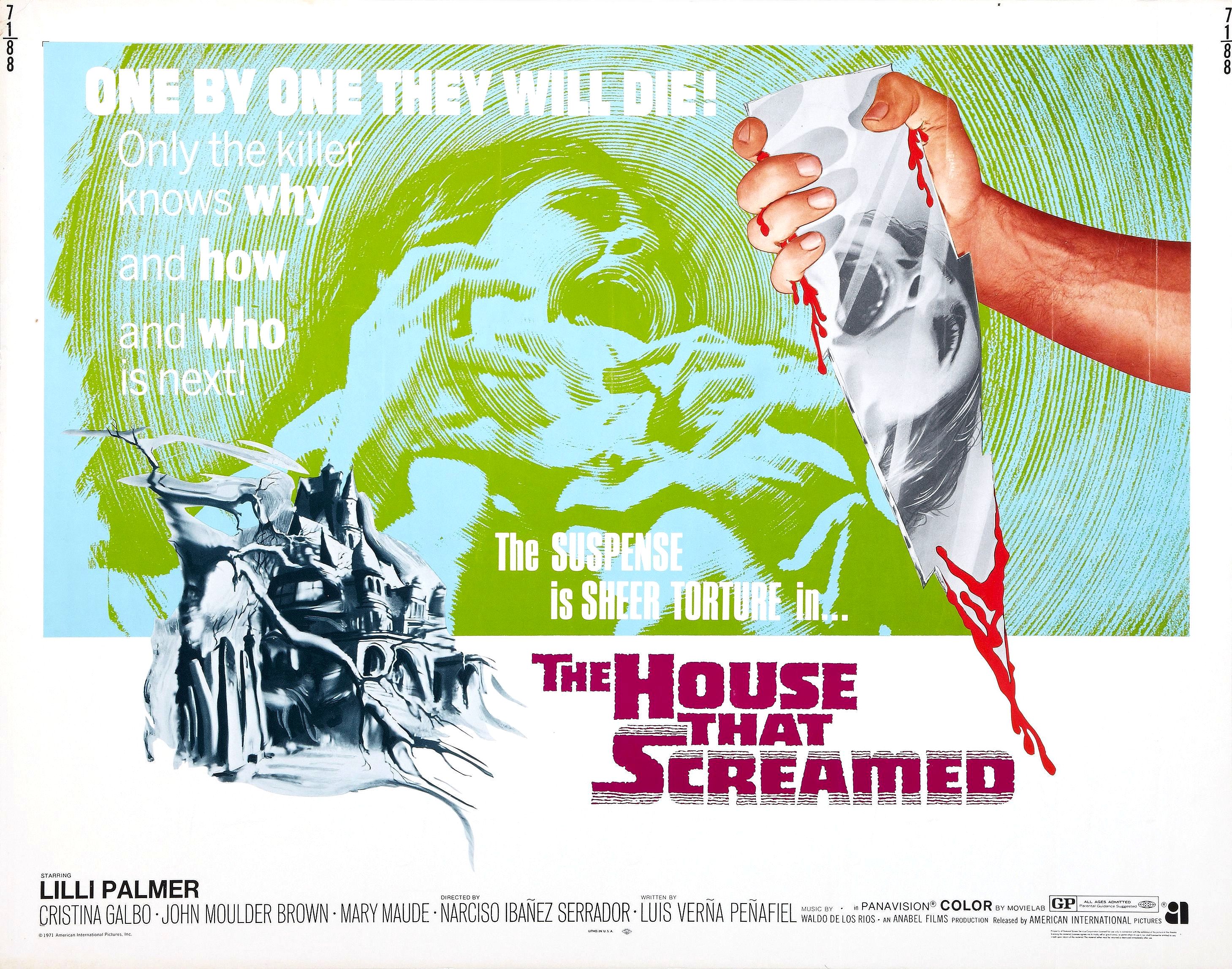
A young girl (Cristina Galbó) arrives at an isolated boarding school in the south of France where several students are believed to have run away, but were actually the victims of a psychotic killer…
Odd mixture of giallo mystery and Hammer-style Gothic, set in a labyrinthine girl’s school where principal Lilli Palmer struggles to contain the passions of her youthful charges, all of whom she considers ‘marked’ by their sublimated sexual desires. However, Palmer is quickly revealed as a hypocrite with an incestuous crush on her handsome teenage son (played as a child-like simpleton by John Moulder Brown), and the students are forced to endure a regime which fosters cruelty, rebellion and murder. Palmer dominates the film with effortless grace, and there’s solid support from Mary Maude as the ice-cold beauty who makes life miserable for heroine Galbó. Memorable set-pieces include a slow-motion murder in the school’s greenhouse, Galbó’s doomed attempt to flee the building at midnight, and – believe it or not – an erotically-charged sewing circle! But the film reaches an apex of horror in its closing moments, when the killer is unmasked during a showdown in the attic, staged with stunning conviction by debut director Narciso Ibáñez-Serrador (¿QUIÉN PUEDE MATAR A UN NIÑO?).
But the *real* star of the show is cinematographer Manuel Berenguer (55 DAYS AT PEKING, KING OF KINGS, etc.), whose prowling camera-work makes a virtue of Victor María Cortezo’s Gothic set designs, and the widescreen compositions are judged with startling clarity (indeed, Dario Argento’s SUSPIRIA owes an obvious debt to the style and tone of Ibáñez-Serrador’s movie). For all its virtues, however, THE HOUSE THAT SCREAMED is a little too leisurely in places, and the film’s sumptuous visual aesthetic disguises a fairly routine plot line, spiced with ‘subversive’ trimmings. Flawed, but beautiful.

